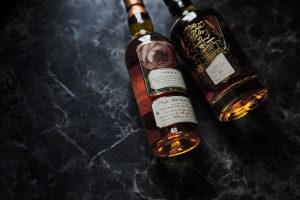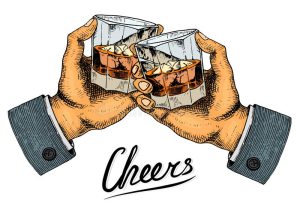Canadian Whisky is experiencing a bit of a revival right now. Lot 40, from Alberta Distillers, is an example of a blend that has a citrusy flavor and aroma profile, which leads to a smooth end.
Another notable Canadian whisky is Pike Creek, which is aged in the elements to produce a fruity spirit with notes of vanilla and cinnamon. It also tastes great mixed-in cocktails.
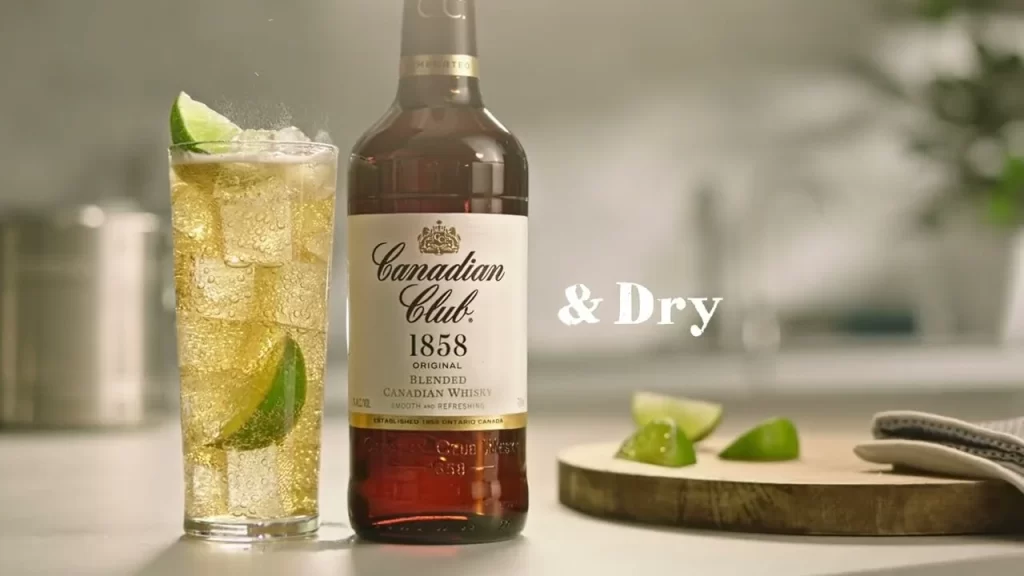
Smooth and Mellow
Many people are surprised to learn that Canadian whisky has a smooth and mellow taste. This is partly due to the fact that Canadian whiskey has less strict distilling laws, which allows for more creativity when it comes to blends, aging, and grain types. Crown Royal, Canadian Club, and other popular Canadian brands are available. The taste profiles of each brand are different, but they all have a smooth texture and are easy to consume. Canadian whisky can also be used to make cocktails and is available on its own or in a cocktail.
While there is a lot of hype about high-end Canadian whisky, there are plenty of great value options too. Crown Royal is one of the most well-known brands of Canadian whisky, and their Noble Collection Winter Wheat Blended Whisky has been the brand’s hottest product as of late. It has a smooth and fruity taste, which makes it a perfect sipper or mixer.
J.P. Wiser is another great choice. It is a blend of whisky made of rye barley and wheat. It is a whiskey with a smooth and rich flavor.
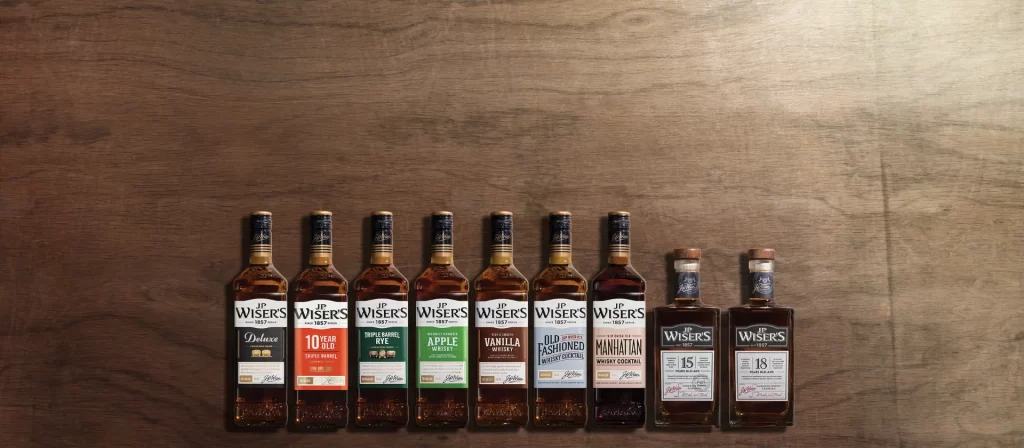
Gibson’s 18-Year-Old Finest Aged Whisky is a great choice if you want a stronger taste. This whisky is aged in oak barrels, which gives it a smooth and rich taste. This whisky is ideal for people who want good-quality, affordable whisky.

Another great Canadian whisky is Pike Creek, which is a premium whisky that is made from rye, corn, barley, and wheat. The whisky has a spicy and sweet flavor, thanks to the spices like ginger and cinnamon. This whisky is ideal for those who like a smooth and delicious drink. This is a great choice for anyone who wants a smooth whiskey. You can find a wide variety of Canadian whiskies at your local liquor store or online. The distiller is a great place to find out which whisky you should buy if you are unsure. You can also rate the spirits and read reviews before purchasing. This will help you make the best decision for your taste preferences.

Unique Flavor Profile
Many people think that Canadian whisky is bland and sour. This couldn’t possibly be farther from the truth. Blending the spirit produces a variety of flavors that are inspired by the type of grain used in the making of whisky. Many brands blend corn and rye to produce a more mild profile, while others like Forty Creek and Caribou Crossing utilize a high rye content to create a more spicy and complex taste.
The aging process is also a major factor in how the whisky tastes. You can find Canadian whisky that has been finished in barrels made of maple wood. This gives the whiskey a sweet taste without any added tannic acids. The harshness is reduced and the whiskey becomes more enjoyable to drink. Another popular finishing technique is to use toasted oak barrels, which helps to bring out the vanilla and caramel flavor profiles of the whisky.
The spirit can be used to make cocktails, but it is also a versatile drink that you can enjoy on its own. The light taste makes it an excellent addition to drinks such as Old Fashioneds or Manhattans. It also goes well with juices like fruity highballs. Try pairing it with maple syrup for a creamy and sweet cocktail.
Many of the myths surrounding Canadian whiskey stem from its being sold sometimes as brown vodka. However, laws governing what is allowed to be called Canadian whisky allow producers to mix in a wide variety of flavors and ingredients to create an interesting and diverse taste profile. Try them out to see what they have to offer. This is an easy and fun way to expand your spirits cabinet and find a new favorite!

Whisky is Different from Other Types
Canadian whiskey is not well-known in the world of whisky, but its style is worth a try. Many people never try real Canadian whisky because most of it is shipped to the United States, re-labeled, and sold as American whiskey. There are still some great examples, such as this Alberta Rye Dark batch from Forty Creek. This blend is made with a mix of rye, wheat, and corn, and it has a smooth flavor that’s perfect for sipping.
The laws and regulations in Canada are a lot less strict than those down south in the US, which allows producers to be more creative with their grains, blends, and barrels. This gives them more opportunities to experiment and create some truly unique whiskies. As a result, you’ll find that there are a lot of different types of Canadian whiskey out there, from bourbon-like whiskies to blended whiskies like Crown Royal.
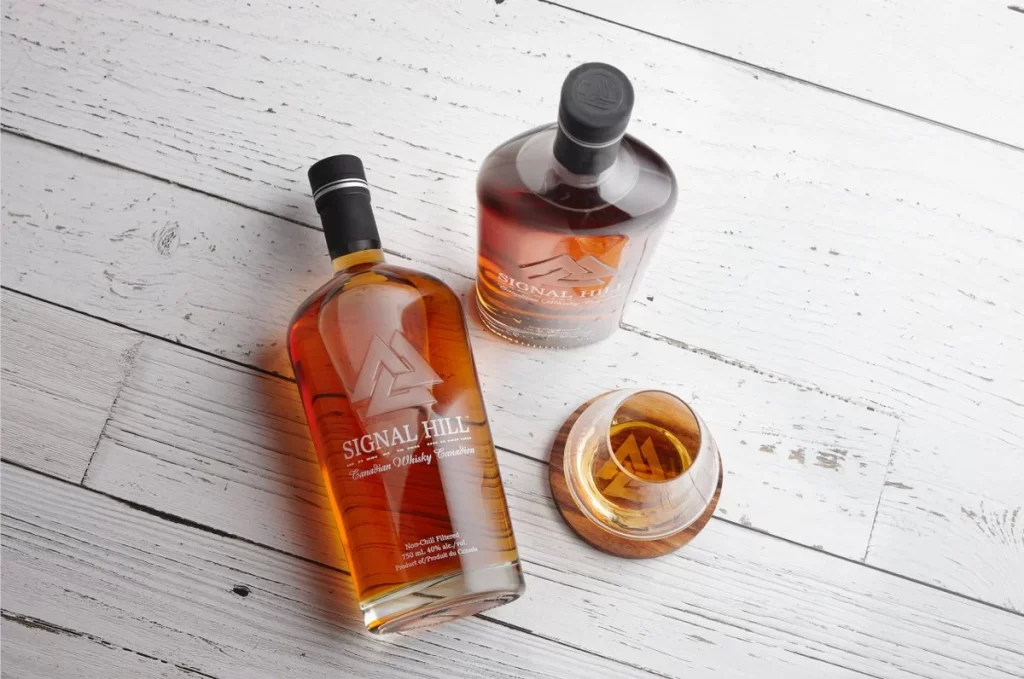
Another thing that sets Canadian whisky apart is the fact that it can be aged in used barrels. It can take on all kinds of flavors, depending on the spirits in previous barrels. This gives it a much more varied and interesting taste than you’ll get from the average bourbon.
Canadian whisky can also contain more grain. As a result, you’ll often find that Canadian whisky has a stronger, bolder taste than other varieties of whisky. This is particularly true when it comes to rye whiskey.
You’ll notice, therefore, that the majority of Canadian whiskies are characterized by a strong flavor of rye.
The best way to experience the flavor of a Canadian whisky is by tasting it neat or in a cocktail. You can even try it on the rocks to really enjoy the flavors that come through. You’ll probably notice vanilla, cinnamon, and other spices as you sip. It’s the ideal drink for relaxing after a busy day.
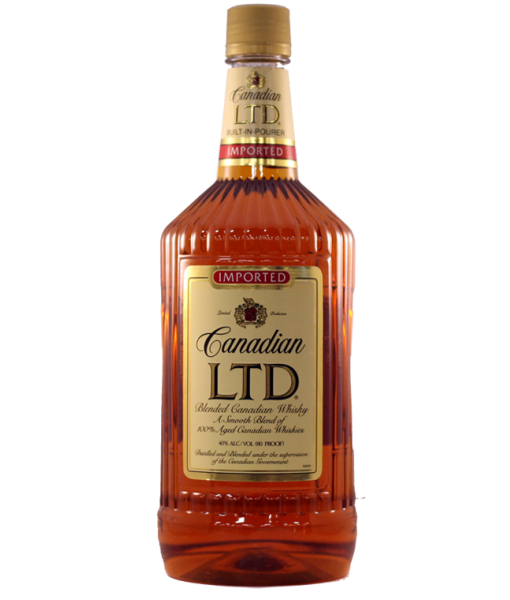
Barrels that are Older than Aged
Canadian whisky is often misunderstood and doesn’t get the respect it deserves in some circles. However, it’s enjoying something of a renaissance and there are many high-end whiskies that rival their bourbon, Scotch, or Japanese counterparts. We recommend trying one of the top Canadian whiskies if you want to try a different spirit.
Crown Royal is the perfect Canadian Whisky if you want a refined and smooth whisky. This popular brand is well-known worldwide and features a unique combination of spices and flavors. The whisky has a unique and rich flavor because it is aged in barrels that have been used. This whisky is perfect to mix or drink on its own.
Another good choice for a smooth Canadian whiskey is Forty Creek Double Barrel Reserve. This whisky is aged for twice as long as the original Forty Creek and has a smooth, butterscotch-like flavor. This is the ideal addition to your liquor cabinet.
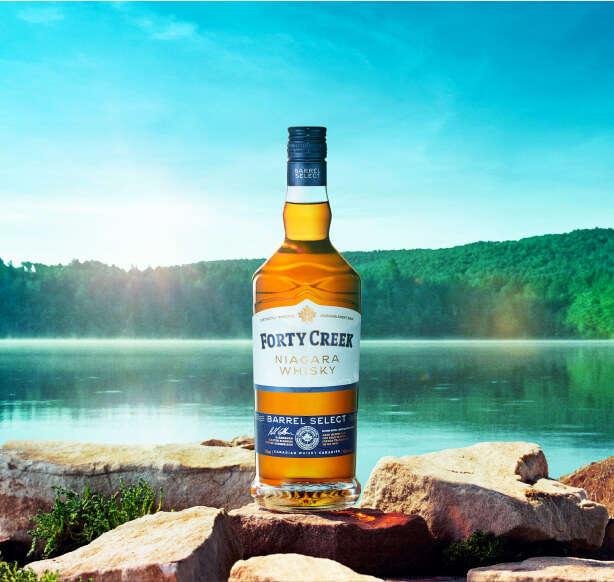
While bourbon and rye producers prefer to use freshly charred oak barrels for their products, most world whisky producers don’t mind using used barrels. It helps save them money by not having to buy expensive oak barrels. They still get the same taste. Check whether the whiskey is aged in new or used barrels when selecting Canadian whiskey.
Many Canadian whiskies are blended and then aged in different types of barrels for additional complexity and flavor. For example, Alberta Premium Dark Horse is a blend of 80% rye whisky and 20% other malts. It’s a great option for mixing or sipping and is very affordable.
For those looking for a more complex Canadian whisky, try Gibson’s Finest Rare-Aged 18-Year. The whisky has a zesty scent and tastes of baking spices, dried fruits, toffee, and green apples. This whisky is a little more expensive than some of the other options on our list, but it’s worth the extra cost.
Download the Distiller App if you aren’t sure how to begin your search for new Canadian Whisky. This free app allows you to rate, review, and discover a wide range of spirits from around the globe.

The History of Canadian Whisky
Unlike single malt whisky, Canadian Whisky is usually blends of highly flavored grain whiskies and may contain corn or wheat. They cannot, however, contain fruit juice.
This far-sighted policy was a boon to pioneers like JP Wiser, Hiram Walker, Henry Corby, and Gooderham & Worts, who helped build Canada. They also supported the politicians who forged Confederation.

Origins
Canada is a young nation, but its whisky history dates back almost as far as Canada itself. The first distillery in the country was founded in 1760 in Quebec City, though the industry began much earlier. Gristmills in the 18th and 19th centuries distilled surplus grain to avoid spoilage, producing rough, unaged whisky from wheat and rye. Early distillers learned their craft from Scottish and American immigrants who traded whiskey for food, furs, and woolen blankets with Native Americans.
At the time of the Confederation in Canada, whisky was already a mainstay for many businesses and families. Early whisky pioneers included farmers who carefully refined their personal stocks by storing a large amount of grain harvested in the fall. The pioneers of Canada’s whisky industry are those who helped Canada earn its reputation for producing some of the best in the world.
These early farmers were the ones who spelled “whisky”, without an “e”, similar to Scotland. This is where it also comes from. The spelling is a result of many Scottish immigrants who settled in Canada and gave the industry a start.
When prohibition hit America in 1920, the popularity of Canadian whisky surged to unprecedented heights. There are limited statistics on how much Canadian whisky entered the United States illegally. However, we can assume it was enough to stock the South’s speakeasies with Canadian whiskey.
Many Canadian distillers took advantage of the prohibition period to concentrate their efforts in America. Henry Corby, William Gooderham, Hiram Walker, and Seagram all grew their business during this period, largely due to the fact that they could sell their whisky in the United States.
Hiram Walker’s and Seagrams, although they produced many different whiskies in their early years, are two of the names that put Canadian Whisky on the American map. They were both able to profit from the popularity of homemade liquors and bathtub gin during Prohibition. Both companies became legitimate suppliers after Prohibition ended.

Early pioneers

Long before there were distilleries, people in what is now Canada had been hunting and trapping fur-bearing animals for millennia. North American trappers, who worked for the Hudson Bay Company and the Northwest Company, used brandy and rum as currency in the 16th-17th century to exchange furs and robes of animals with aboriginals. They also traded food, blankets made from wool, guns, and other goods. The distilled products were usually highly diluted and then transferred to animal skin bags or barrels. Native Americans referred to these distilled beverages as “firewater.”
John Molson, the first Canadian commercial distiller, opened his first business in 1821. Molson’s business success inspired others, including Henry Corby and James Worts to open their own companies. Gooderham & Worts had become one of the biggest whisky producers on the planet by 1900.
Bootlegging became a very common practice in the United States when prohibition began to take hold. The infamous bootleggers like Al Capone would routinely have bottles of Canadian whisky shipped across the border into the US in schooners for sale at wildly inflated prices.
After Prohibition, Sam Bronfman bought the Seagram’s company and brought them back to life. He was obsessed with quality and unlike the quick-buck artists of the Prohibition era, was able to capitalize on the renewed demand for quality whisky.
In the 1940s when Crown Royal, a whisky created in Canada to celebrate a visit by HM Queen Elizabeth II, was introduced, more than 300 Canadian brands and 100 distilleries were producing whisky.
During this time, wheat was the grain of choice for making Canadian whisky. In response to the growing demand for high-quality whisky, distillers began adding rye to their wheat mash. Rye Whisky was born. In the mid-1940s, rye whisky was accounting for over 40% of all Canadian whisky sales. This figure grew to more than 80% by the end of World War II. 20% of the remaining whiskies were grain whiskies, such as scotch and bourbon.
Seagram’s

Archives hold thousands of reports on market research that tell the story of Seagram’s rise to become one of Canada’s most popular whisky brands. These documents show how changing consumer attitudes and lifestyles influenced their buying choices. Seagram began a series of surveys after World War II to track trends in consumer tastes and consumption.
First, there was Joseph E. Seagram & Sons Company in Waterloo (Ontario). In 1928, this firm merged with the Distillers Corporation – Seagram. Bronfman was a family that migrated to Canada from the anti-Semitic pogroms of Czarist Bessarabia. They built a business empire in Canada in both hotel management and alcohol sales.
When prohibition struck in America in 1920, the family business took up the distilling and shipping of alcoholic beverages. In 1935, Bronfmans had three American distilleries and shipped 10 million gallons of bourbon and whisky across the border, and owned 3 American distilleries. In 1936, this was more than double the production of other Canadian whisky makers.
Despite the prohibition, there was a huge demand for Canadian whiskey in America. It was particularly popular with Prohibition bootleggers who shipped crates of the product across the Detroit River to Walkerville, or even to the Chicago suburb of Oak Park, to be sold at grossly inflated prices. Seagram bucked the trend by selling their products in bottles already bottled by local rectifiers, rather than by barrel consignment as other distillers did.
This innovative marketing strategy allowed the Bronfmans to maintain control over the quality of their distilled spirits, and it also allowed them to sell at competitive prices in a difficult market. This would soon become a standard in the beverage business.
Seagram’s 7 Crown became one of the most popular whiskies around the globe. It was a popular choice for the classic cocktail, the Manhattan. Today, the brand is marketed as an “everyday whisky.” Its signature label features a red 7 with the name Seagram in a stylized font above it. The bottle is squared, which makes it easy to fit into a cabinet.
Hiram Walker
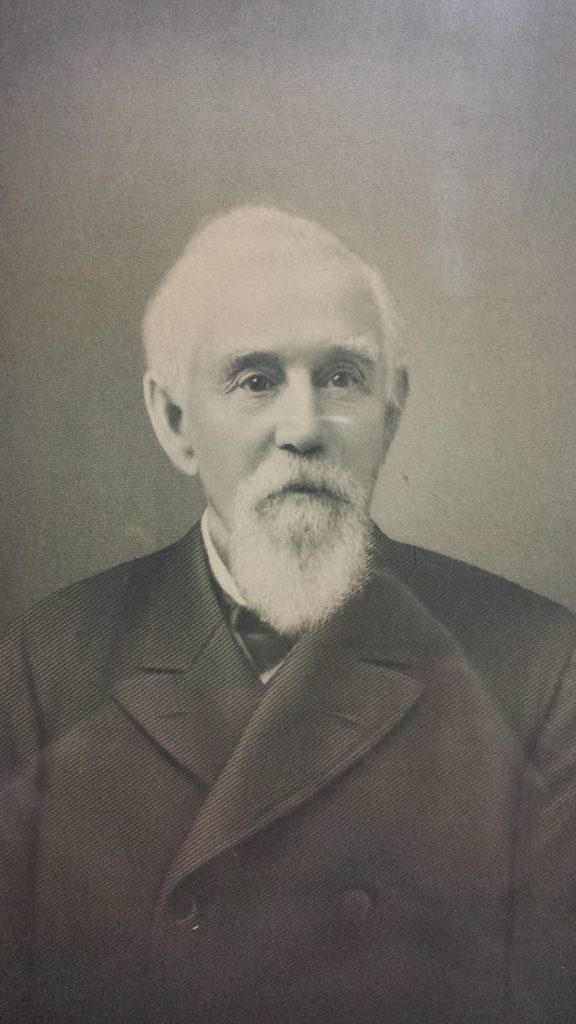
Canadian whiskey has the reputation of being boring and bland but is currently enjoying a revival and anyone calling themselves a lover of world whisky should celebrate this. You’re drinking a product influenced by American, Irish, and Scottish distilling methods whether you drink Crown Royal or the more recent straight ryes.
Hiram Walker made his first major breakthrough in 1857 when he bought a Windsor distillery and began creating Club Whisky. He used the highest quality grains and a unique process that made his whisky smoother than anything else on the market. Whisky was a big hit in America and the top-selling whiskey in America even before Canada became part of the United States. When it came to marketing his brand, he was innovative and savvy. His clever advertising was memorable and he used many different techniques. He also put whisky in bottles that had a special seal to let consumers know they were buying a high-quality product.
As the industry evolved, distillers began to produce whisky using a blend of grains rather than single-grain types. These blended products were more versatile and offered the opportunity to appeal to a broad range of consumer tastes. Coffey’s introduction in the early 1900s further refined this method and enabled producers to get more flavor from grains like wheat that have little enzymatic capacity on their own.
Since Prohibition bourbon, rye, and other whiskies have seen a rise in popularity. However, a new generation is discovering Canadian Whisky’s unique taste. Canadian distillers produce more craft and high-end whiskies than the classics. These have won international awards.
Don Livermore (BSc ’95) is the master blender at Hiram Walker & Sons Ltd, North America’s largest beverage distillery, and creator of some of the nation’s most beloved whisky brands, including Lot 40 and JP Wiser’s. Don Livermore’s vast knowledge in brewing and distilling has earned him the title of “Whisky Doctor” and he’s proud to be a part of Canada’s rich whisky history.
FAQ
Which Canadian brands are well-known?
Canada is home to some reputable whisky brands. Examples include:
1. Crown Royal
2. Canadian Club
3. Forty Creek
4. Alberta Premium
5. Gibson’s
6. Pike Creek
7. Lot No. 40
8. Wiser’s
The brands offer a wide range of flavors and expressions with unique profiles.
Can you tell me the age of Canadian whisky?
Although some Canadian whisky labels include age statements on the bottles, this is not required by law. Canadian whisky, which is usually a blend, contains whiskies of varying ages. The age statement will, therefore, represent the youngest whisky. Many Canadian whisky producers are more concerned with creating a consistent flavor profile than focusing on specific ages.
Can I visit Canadian Whisky Distilleries?
There are many distilleries that offer tours and samplings for visitors in Canada. These tours offer a chance to learn more about the distilling process, tour the facilities and taste different expressions. You can check the website of the distillery or contact them directly for information on their opening hours and tour availability.
It is recommended that you plan ahead to confirm all the details and availability of the distillery tour.
What is the best Canadian whisky?
Determining the “best” Canadian whisky is subjective and depends on personal taste preferences. However, some popular and highly regarded Canadian whisky brands include Crown Royal, Lot No. 40, Pike Creek, Forty Creek, and Alberta Premium. Exploring different brands and expressions can help you find the one that suits your palate.
What makes Canadian whisky unique from other whiskies?
Canadian whisky is different from other whiskies. The blending process, which combines different whiskies from grains such as corn, rye, and barley, makes it lighter and smoother. Canadian whisky tends to have a higher rye content, giving it a spicy and complex flavor. Canadian whisky, usually aged in barrels that have been used, has a subtler flavor profile, with less oak and smokiness.
Can Canadian whisky age the same as other whiskies?
Can a whisky be aged the same as other whiskies? Canadian whisky is aged in oak barrels for a minimum of three years. However, some brands age their whiskies longer. The aging process allows flavors to develop over time and add complexity and depth to the whisky.
What is the best way to enjoy Canadian Whisky?
You can enjoy Canadian whisky in many different ways, depending on your personal taste. Enjoy it neat and slowly sip it to enjoy its aromas and flavors. Add a few cubes of ice to the whisky for a refreshing twist. Canadian whisky can also be found in many cocktails such as the classic Whisky Sour and the Old Fashioned. Try different serving styles and find out what you like.
Can you get limited editions or special editions of Canadian whisky?
Many Canadian whisky brands do release special or limited editions. These releases are often characterized by unique flavors, different aging methods, or rare cask finishings. Watch out for limited editions from popular Canadian whisky brands. They can be a great way to experience something new and exciting. Check local liquor shops or the distillery website to find out about limited editions and special releases.
What is the best way to consume Canadian Whisky?
Canadian whisky can be enjoyed in many different ways, depending on your personal preference. Here are some common techniques.
1. Enjoy Canadian Whisky Neat. This allows you to fully appreciate its flavors and aromas, without the need for mixers or even water. So take your time in enjoying this Canadian spirit. Take your time and enjoy each sip, taking in its subtleties.
2. Pour it on the rocks. Mixing Canadian Whisky with ice cubes can make its flavor mellow and provide a refreshing sensation. The technique can add a refreshing touch and soften the harsh flavors.
3. Whisky Cocktails: Canadian Whisky is a key ingredient in many drinks. From Old Fashioneds to Whisky Sours, you can also use it as a base for more unusual concoctions such as the Whisky Flip and Rum Punch. Whisky’s smooth flavor and versatility make it the perfect base for a variety of mixed drinks. Experiment with different recipes to find your favorite whisky cocktail recipe.
What makes Canadian Whisky different?
Canadian Whisky is unique amongst other whiskies because it has several distinctive characteristics.
1. Blending: Canadian Whisky is known for its unique blending processes, which consist of whiskies made from different grains, such as barley, corn, and rye. These whiskies are then blended into a harmonious blend that has no sharp edges. The result is a harmonious and approachable profile with a wide range of flavors.
2. Canadian Whisky is Lighter and Smoother: Canadian Whisky has a lighter, smoother taste than its international counterparts. This is because it uses used barrels in its production, which results in softer flavors with less oakiness and smokey notes.
3. Rye Whisky: Many Canadian whiskies have a high content of rye to enhance flavor and spice.
4. Canadian Whisky Age Requirements. Canadian whisky is required to be aged in oak barrels for at least 3 years before it can be sold, although many brands extend the time period. The aging process allows the flavors to mature and develop over time.
5. Canadian Whisky emphasizes grain neutrality to bring out other flavors in its blend. This creates a more balanced, approachable and balanced flavor profile.


